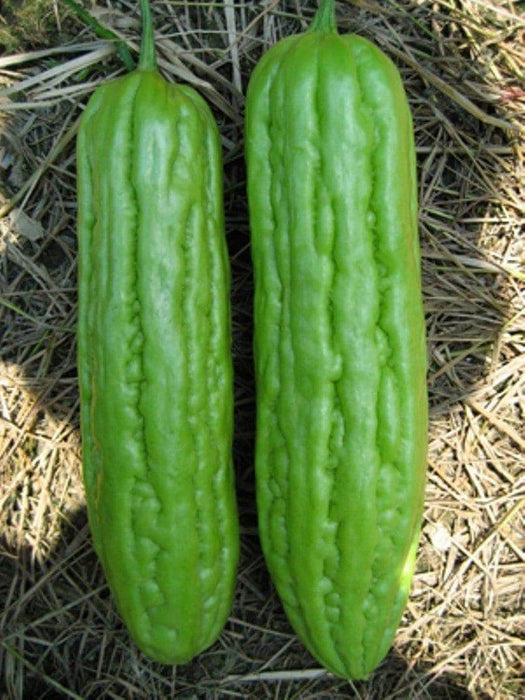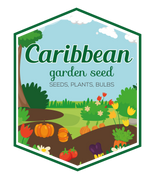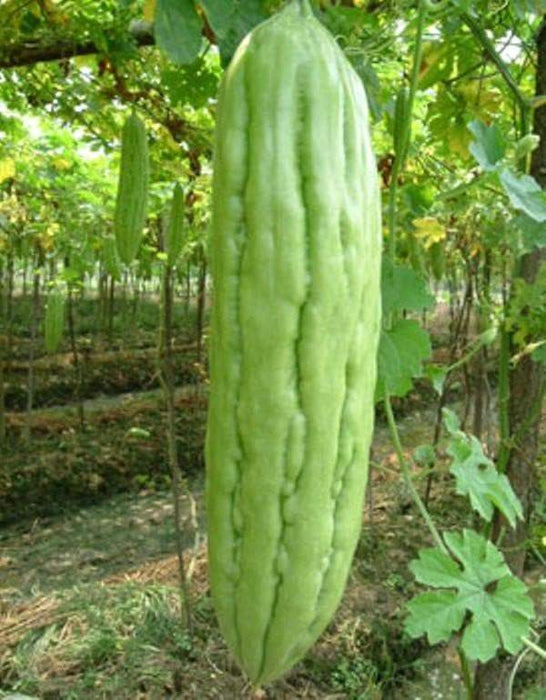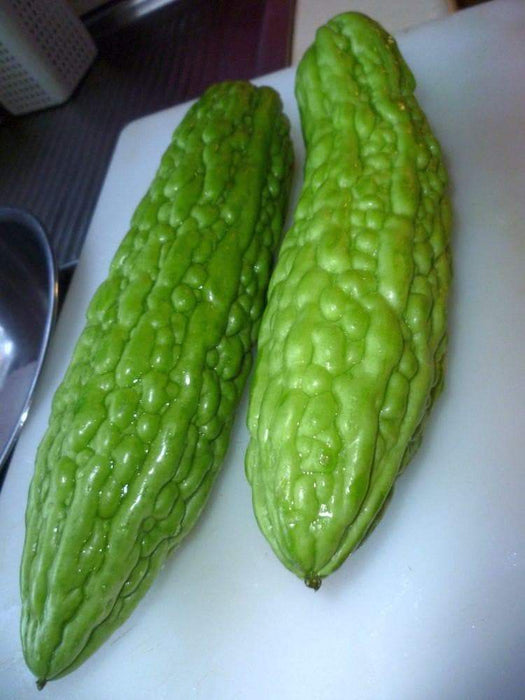
Green SKIN Bitter Gourd Hybrid, Bitter Gourds Seeds - Asian vegetable
Most orders are processed by the next day
Select your desired size and/or color from the available options.
Green Bitter Gourd Hybrid
Momordica charantia
- Warm season annual
- Approx. 7-10 seeds in packet. (A seed will vary in weight and size within a given seed lot. The number of seeds stated is only an estimate.)
- Maturity: Approx. 56-63 days
- Planting season: Late spring to early summer
- Culinary tips: Bitter melons are excellent in soups and a tasty addition to stir-fries. Try them stuffed with pork, seafood or cooked with fermented black beans. Recommended as a healthy food by the American Diabetic Association.
Bitter Gourd is one of the most popular vegetables in China, Taiwan, Vietnam, Thailand, India and the Philippines. Bitter Gourd, also called Bitter Melon, has an acquired taste. The plant is grown mainly for the immature fruits although the young leaves and tips are edible. Bitter Melon seed has hard skin and needs warm/moist soil conditions during germination. It may fail or take a long time to germiante if the soil temperature is too low. Bitter Melon is a long-season, high-humidity and warm-climate vine plant and needs to grow along supports.
NOTE: Bitter Melon needs insects to carry out the pollinating process for setting fruits. If the insects are not available in your area, the pollinating process can be done manually, by picking up male flowers and transferring pollens (face-to-face touching the center part of flowers) to femal flowers. Femal flowers have a fat section between the flower and vine stem. This process should be carried out when flowering is active during the daytime. If the pollination is success, the fat portion will grow into full size fruit.
Cultivation: Prepare fertile, well-drained soil. In warm areas, sow seeds in spring/summer after last frost in a warm, sunny location. Low soil temperatures may result in low or no germination. For better germination, pre-sprout seeds indoors by soaking in water for 24 hours. Wrap in wet paper towel and keep warm. Plant when seeds sprout. Keep soil moist. Fertilize as needed. Train to climb a vertical support for better air circulation and ease of harvest.
LET OUR CUSTOMER SPEAK FOR US

![[Seeds] - Caribbeangardenseed](http://caribbeangardenseed.com/cdn/shop/files/gift-card-gift-card-1_1024x1024_dfa857db-9150-4315-a362-7f0bb3fb9c47_60x28.png?v=1703978838)

